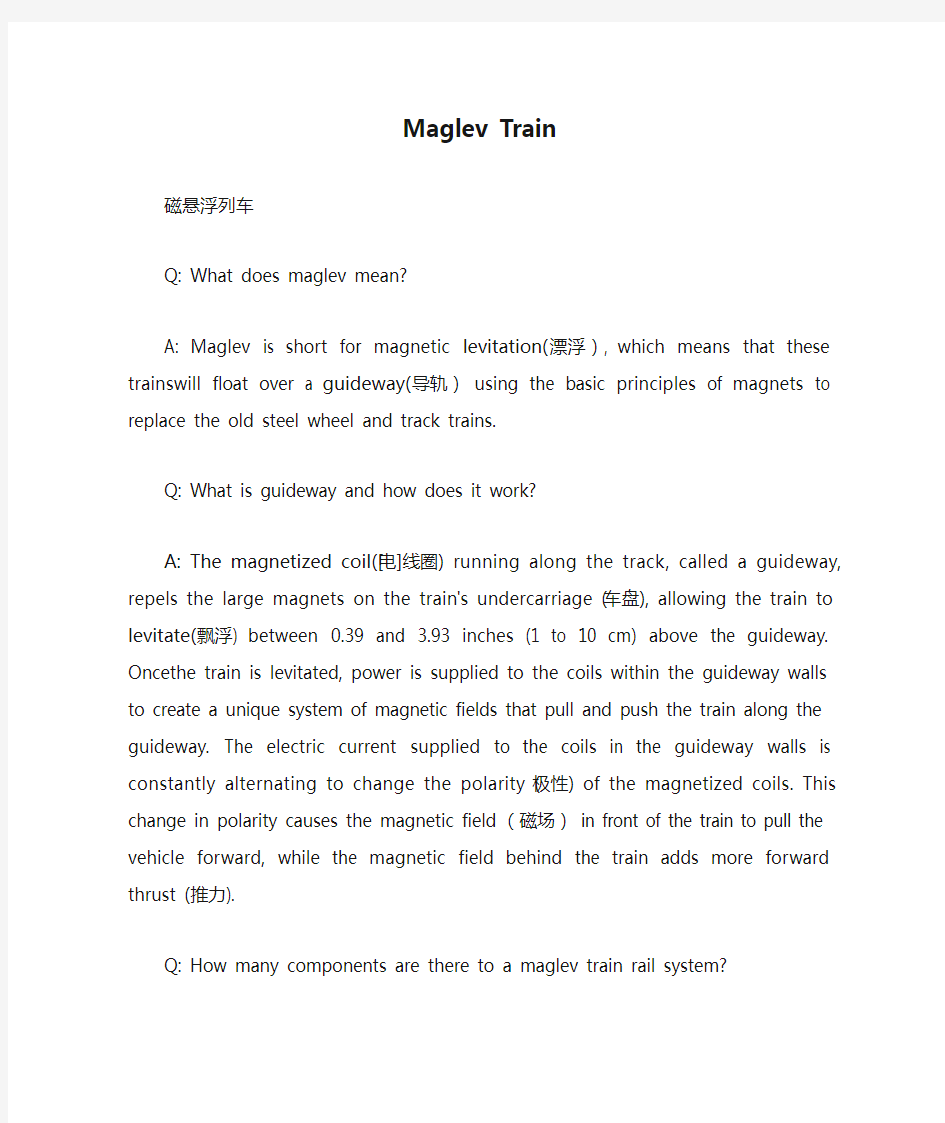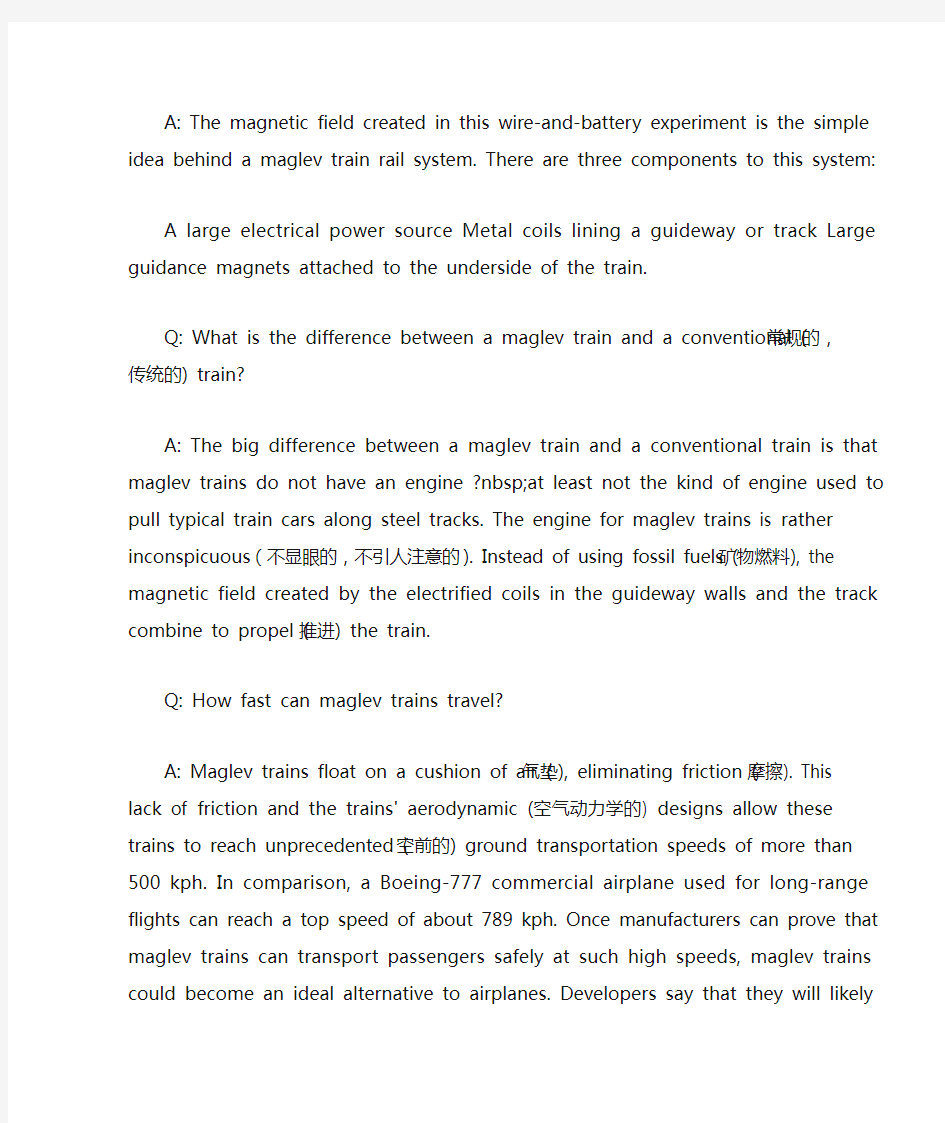Maglev Train


Maglev Train
磁悬浮列车
Q: What does maglev mean?
A: Maglev is short for magnetic levitation(漂浮), which means that these trainswill float over a guideway(导轨)using the basic principles of magnets to replace the old steel wheel and track trains.
Q: What is guideway and how does it work?
A: The magnetized coil([电]线圈) running along the track, called a guideway, repels the large magnets on the train's undercarriage (车盘), allowing the train to levitate(飘浮) between 0.39 and 3.93 inches (1 to 10 cm) above the guideway. Oncethe train is levitated, power is supplied to the coils within the guideway walls to create a unique system of magnetic fields that pull and push the train along the guideway. The electric current supplied to the coils in the guideway walls is constantly alternating to change the polarity (极性) of the magnetized coils. This change in polarity causes the magnetic field(磁场)in front of the train to pull the vehicle forward, while the magnetic field behind the train adds more forward thrust (推力).
Q: How many components are there to a maglev train rail system?
A: The magnetic field created in this wire-and-battery experiment is the simple idea behind a maglev train rail system. There are three components to this system:
A large electrical power source Metal coils lining a guideway or track Large guidance magnets attached to the underside of the train.
Q: What is the difference between a maglev train and a conventional (常规的,传统的) train?
A: The big difference between a maglev train and a conventional train is that maglev trains do not have an engine ?nbsp;at least not the kind of engine used to pull typical train cars along steel tracks. The engine for maglev trains is rather inconspicuous(不显眼的,不引人注意的). Instead of using fossil fuels (矿物燃料), the magnetic field created by the electrified coils in the guideway walls and the track combine to propel (推进) the train.
Q: How fast can maglev trains travel?
A: Maglev trains float on a cushion of air (气垫), eliminating friction (摩擦). This lack of friction and the trains' aerodynamic (空气动力学的) designs allow these trains
to reach unprecedented (空前的) ground transportation speeds of more than 500 kph. In comparison, a Boeing-777 commercial airplane used for long-range flights can reach a top speed of about 789 kph. Once manufacturers can prove that maglev trains can transport passengers safely at such high speeds, maglev trains could become an ideal alternative to airplanes. Developers say that they will likely link cities that are up to 1,609 km apart. At 500 kph, you could travel from Paris to Rome in just over two hours.
